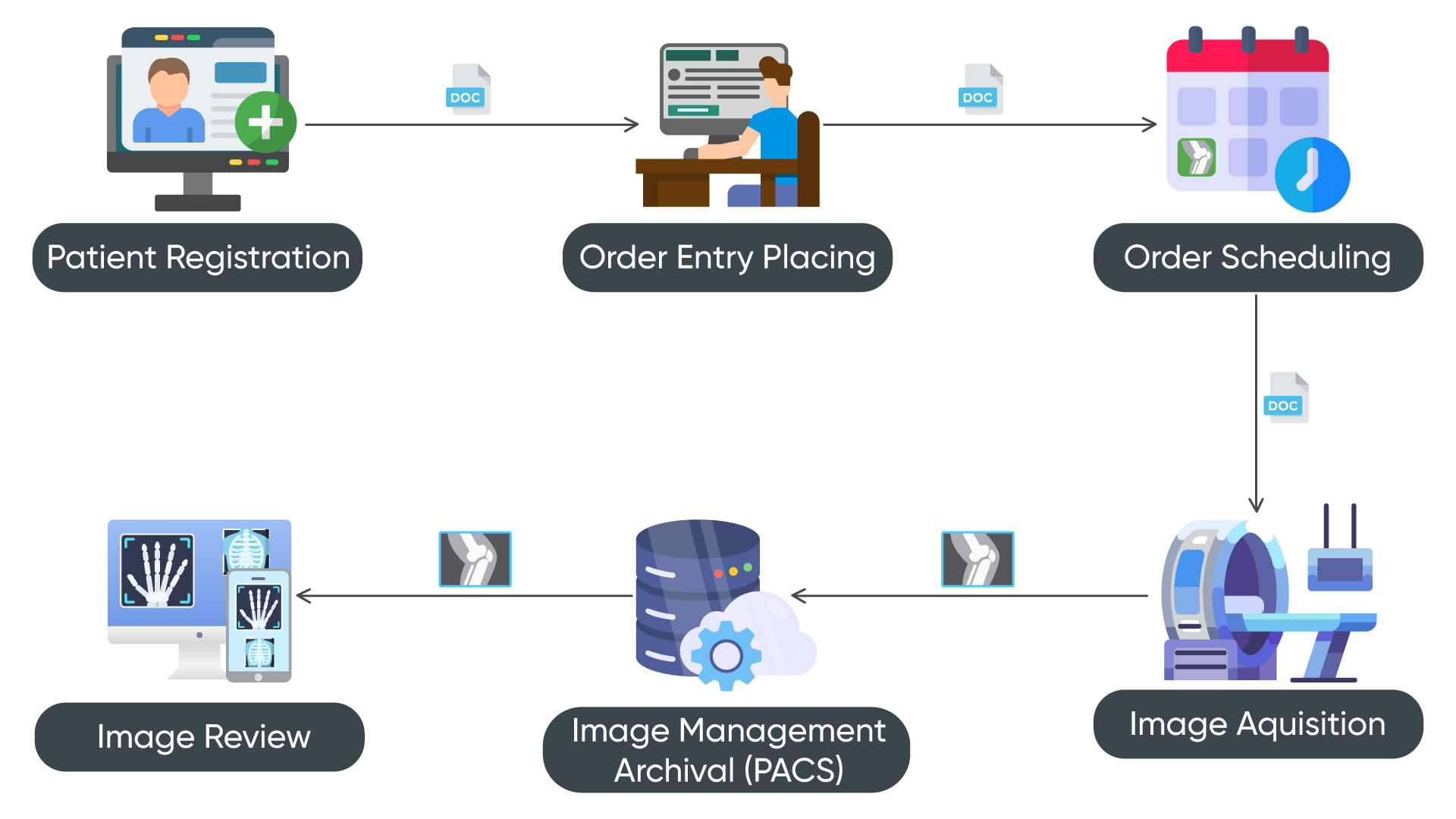Overview
The client is a reputable orthopedic care specialist organization based in the United States, renowned for its extensive experience and commitment to providing exceptional patient care. The organization operates multiple clinics across diverse locations with a team of expert orthopedic professionals. The client operates with a significant intake of 175-300 patients weekly. The clinic boasts a comprehensive team of 25 physicians, 40 staff members, and 15 administrators. To align with their longstanding dedication to patient care, the client is actively seeking an EMR solution.
Business challenges
The Client required software that manages orthopedic medical images of patients. To ensure quicker treatment and improved patient care. Orthopedic practices rely heavily on imaging technology, which helps in the assessment of disease. The client understood the need to integrate EMR software with Imaging technology to ensure smooth management of medical images. The client also requested several more features, such as AI-generated notes, outcome tracking, appointment scheduling, and customized reporting and analytics.
Thinkitive Solution
The Client required software that manages orthopedic medical images of patients. To ensure quicker treatment and improved patient care. Orthopedic practices rely heavily on imaging technology, which helps in the assessment of disease. The client understood the need to integrate EMR software with Imaging technology to ensure smooth management of medical images. The client also requested several more features, such as AI-generated notes, outcome tracking, appointment scheduling, and customized reporting and analytics.
We integrate imaging technology with EMR from various vendors, including Merge Healthcare, McKesson Radiology, GE Healthcare, Philips Healthcare, Agfa Healthcare, Siemens Healthineers, and Cerner Corporation.
Based on the feature list we have developed an EMR software that integrates with imaging technology(PACS) and some additional features such as AI-generated notes, outcome tracking, appointment scheduling, and customized reporting and analytics.

Solution Highlights
-
a) Image Comparison
Using this integration, Orthopedic professionals can easily compare current images with previous studies to monitor disease progression, treatment outcomes, and postoperative changes.
-
b) Integration with Patient Records
Radiology images are linked to the corresponding patient records, ensuring that orthopedic professionals can view images in the context of the patient's medical history. This removes the searches for particular patient medical images.
-
c) Image Annotation
Orthopedists can annotate, mark up, and add notes to images to highlight specific findings or areas of interest for diagnosis, treatment planning, and patient discussions.
1. Imaging Technology(PACS) Integration
We integrate PACS and EMR systems to exchange data using industry-standard protocols such as HL7 (Health Level Seven) and DICOM (Digital Imaging and Communications in Medicine). It is a medical imaging technology used to store, manage, and share the medical images of patients. Such as X-rays, CT scans, and MRIs. It offers several features-
2. Appointment scheduling
The software allows orthopedic staff to electronically schedule appointments of patients with healthcare providers with few manual entries. Also using the patient portal patients can schedule appointments as per their convenience.
- Select the Date and time as per convenience
- Schedule, reschedule, or cancel appointments
3. AI-Generated Notes
During the encounter with the patient, the software collects the orthopedist's voice notes, converts them into machine-readable language, and updates them in the software using artificial intelligence.
This feature saves time on patient medical information documentation and increases consultation time.
4. Orthopedics-specific Customizable Templates
Orthopedic EMR software integrates tools for systematically assessing patient outcomes. This evaluation may include pain, joint functionality, mobility, quality of life, and patient satisfaction.
Data visualization tools, such as charts and graphs, are frequently used in outcome tracking features to present patient progress and outcomes in a clear and accessible forma.
Value Delivered
-
Cost Savings
By reducing the need for film-based images and physical storage, orthopedic practices can save on imaging costs. Additionally, it minimizes the costs associated with duplicative or unnecessary imaging procedures.
-
Data Security
The integration ensures that patient imaging data is securely stored and follows privacy and security regulations, such as the Health Insurance Portability and Accountability Act (HIPAA).
-
Research and Education
Integrated software provides imaging data which helps in research and patient education to improve the quality of treatment.
-
Streamlined Workflow
The availability of imaging data within the EMR reduces the need for manual data entry and switching between different systems. This improves productivity and saves time for orthopedic professionals by streamlining their workflow.
